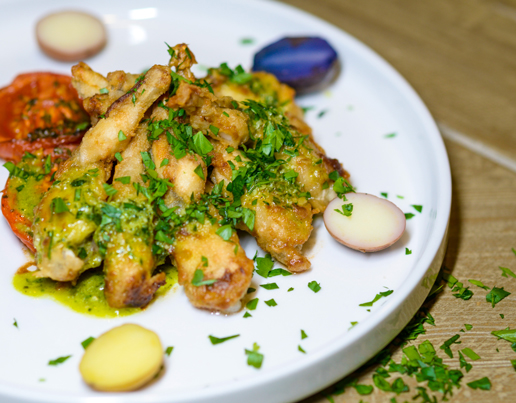How Frog Legs Came To Be Synonymous With French Cuisine

Here in the states, frog legs are typically associated with Cajun cuisine, but traditionally, the frog legs we know today originate from the Acadian motherland of France. Archaeological evidence suggests earlier iterations in Southeast Asia, Europe, and even South America, but further information is scarce.
Known in France as Cuisses de Grenouille, frog legs were consumed in response to a 12th Century Catholic Church ban on meat. Apparently, monks enjoyed a king’s diet. Noticing an increase in XXL robe requests, the church authorities decided to prohibit meat consumption for a period of days each year. This imposed “meat-tox” fueled the monk’s resourcefulness and in response, they cleverly had frog legs designated as fish. Consequently, religiously devout locals hopped on the bandwagon, and the rest is fishtory.
Cuisses de Grenouille is a French national delicacy. To give an example of its popularity, around 80 million frogs are eaten each year. That’s a mind-numbing 160 million frog legs. The most surprising part of this fact is that due to a ban on frog hunting in France, each leg is imported. Let that staggering statistic hop around your mind for a bit.
Like most dishes, frog legs can be prepared in various ways. In France, they’re most commonly cooked using butter, garlic and parsley sauce accompanied by salad or steamed rice. Á la Parisienne, or Paris-style, is another approach that is more akin to chicken wings and involves breading and frying the legs. Lastly, the à la Poulette (white sauce with egg yolk) style is slightly more complicated with its use of a white wine and mushroom sauce reduction.

Back stateside, New York City is experiencing a froggy resurgence thanks to freshly opened restaurant Brasserie Saint Marc. Head Chef Frederick Piccarello (former Executive Chef of Le Barricou bistro in Williamsburg) along with owner and Swedish actor Karin Agstam are bringing an amphibious flare to 136 2nd Ave with Cuisse de Grenouille à la Provençal.
In French cuisine, à la Provençal refers to dishes prepared in the style of Provence, France, a southeastern region that borders Italy and the Mediterranean Sea. Provençal ingredients generally include garlic, onions, tomatoes, mushrooms, eggplant, and olive oil. Chef Piccarello’s Cuisse de Grenouille a la Provençal is sautéed in garlic and parsley butter and served with roasted tomatoes and Yukon gold potatoes. It keeps with tradition while paired with an American twist.
Owner Karin Agstam’s attraction to French cuisine comes from her time spent in Paris studying art at Sorbonne University at the receptive age of 18. Experiencing Parisian brasseries with their classic menu offerings made a lasting impression. It’s this experience that she hopes to share with Brasserie Saint Marc, a passion project four years in the making. If you have a predilection for French cuisine with an American edge, look no further than Brasserie Saint Marc — but don’t forget the longstanding connection of French cuisine and frog legs.






















